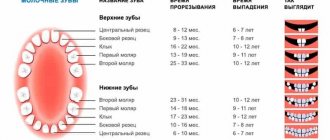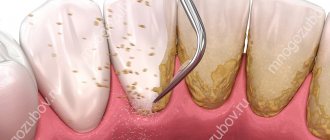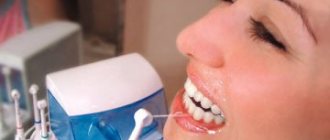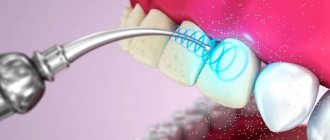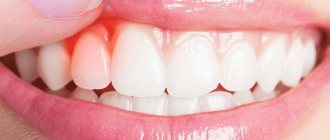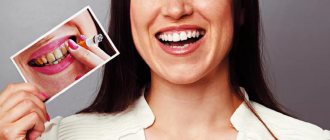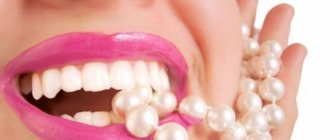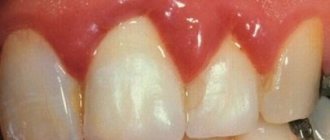People knew that they needed to brush their teeth after eating several thousand years ago. But until about the 20th century, only a few people could boast of healthy teeth. Most of the population did not pay due attention to oral hygiene. And in the arsenal of those who did take care of their teeth, there were not many cleaning devices.
Today, stores offer a variety of oral care devices and products. However, most people only use a toothbrush, although flossing also has its fans. According to the Dental Association, a toothbrush can remove about 30-40% of plaque. A regular toothbrush does not remove plaque from interdental spaces and hard-to-reach places. For oral hygiene to be truly effective, it is necessary to use several tools to clean your teeth. One of such devices is the Waterpik irrigator, you can buy it in St. Petersburg or another city in our stores.
Toothbrush
Despite the fact that a toothbrush by itself is not able to completely clean teeth of bacteria and plaque, it should be used daily. The hardness of your toothbrush should match your teeth type. If thin enamel is brushed daily with hard bristles, this will result in big problems with your teeth. It is better to consult your dentist regarding the type of brush hardness. A toothbrush can be used for no more than 3 months, after which it becomes a breeding ground for bacteria and germs.
There are traditional and electric toothbrushes.
Dentists often hear the question - which brush to choose? The answer depends on how much time you spend brushing your teeth. You need to brush your teeth for 3 to 5 minutes, spending time on each tooth. Many people brush their teeth on the go, resulting in little benefit from brushing. An electric toothbrush is better at removing plaque and can clean your teeth in just 2 minutes.
Oral hygiene rules
Regular teeth cleaning
You need to brush your teeth at least twice a day, and ideally after every meal. The brush movements should be directed from the gums along the outer or inner surface of the teeth towards their cutting edge. Movement across the teeth can gradually lead to thinning of the enamel.
For hygienic purposes, it is recommended to brush your teeth in the same sequence and at an even pace.
Timely replacement of hygiene products
Toothbrushes must be changed at least once every 3 months. This is due to the fact that pathogenic bacteria remain on the surface of the bristles, which during each procedure are again transferred to the oral cavity and can cause inflammation.
Regular visits to the dentist
Even in the absence of toothache or other unpleasant symptoms, it is recommended to visit the dental clinic at least once a year.
The doctor will conduct a preventive examination and, if necessary, prescribe the necessary hygienic or therapeutic procedures.
Dental floss
Even the most modern toothbrush cannot get into the spaces between your teeth. But it is in these places that pieces of food get stuck, which then become a habitat for billions of bacteria. If you do not clean food from the interdental spaces, sooner or later caries will form in these places. Dental floss, or floss as it is also called, is a simple and at the same time very effective device for cleaning the spaces between teeth.
In pharmacies you can find various modifications of floss for cleaning teeth. Depending on the width between the teeth, you can select the optimal width floss. Floss can be waxed or unwaxed. Wax-impregnated dental floss is perfect for those who are just starting to use this device. However, non-waxed floss does a better job of cleaning the surface of the tooth. Use dental floss with caution to avoid damaging your gums. Most doctors recommend flossing daily before bed.
Contract manufacturing
The interpretation of the concept of “oral hygiene products” (ODH) means all means and substances that are used to cleanse, prevent, treat and refresh the oral cavity. They are not classified as medications.
Individual oral hygiene products are a vital thing for every person. It is very important to choose them correctly. Before buying a brush or toothpaste for yourself or your loved ones, remember one simple truth: you don’t skimp on your health. By purchasing cheap and low-quality products, you doom yourself to the fact that in the future you will spend a tidy sum on a trip to the dentist. Try to choose quality products and only from trusted manufacturers.
What is the classification of oral hygiene products?
If we classify SGPR by frequency of use, we can distinguish two groups:
1. The first group includes the basic oral hygiene products that we use every day. This is a brush and toothpaste.
Currently, the range of toothbrushes is simply amazing. They differ in design and principle of operation. There are ordinary products that most people use. There are electric brushes that run on rechargeable batteries. There are also ultrasonic products.
Whatever type of brush you choose, pay attention to the following points: what size the head is, what kind of bristles it is and how comfortable the handle design is.
Many manufacturers offer brushes with five different degrees of hardness, ranging from the softest to super hard bristles. The best option is a brush of medium hardness. Its main advantage is that it effectively cleans teeth and does not injure the gums. During the year, the brush is changed three to four times. Take a particularly responsible approach to choosing children's oral hygiene products. To avoid scaring the child away from the daily and important procedure of brushing his teeth, the first brush should have very soft bristles. Next, when replacing a toothbrush, you can select products with stiffer bristles. Pay attention to the design of the product for a child. He will like a brush in the shape of a cartoon character much more than a regular product.
Choosing toothpaste also has its own characteristics. First of all, pay attention to the composition of the paste. Buy an oral hygiene product that will protect your teeth and gums from caries and periodontal disease. It is advisable to use a paste containing medicinal plants. But you shouldn’t trust whitening components. The best way to whiten your teeth is by brushing your teeth regularly.
Choosing toothpaste also has its own characteristics. First of all, pay attention to the composition of the paste. Buy an oral hygiene product that will protect your teeth and gums from caries and periodontal disease. It is advisable to use a paste containing medicinal plants. But you shouldn’t trust whitening components. The best way to whiten your teeth is by brushing your teeth regularly.
2. The second group is additional oral hygiene products. This includes dental floss, fresheners and mouth rinses. Dental floss is needed to thoroughly clean the interdental space, since the bristles of the brush simply do not reach there. Fresheners and rinses have a largely cosmetic effect.
The group of additional SGPRs also includes traditional medicine. It is very useful to rinse with decoctions and infusions prepared from medicinal plants.
To keep your teeth and gums healthy and beautiful, you need to use care products regularly, and not occasionally. And it is advisable to use them comprehensively.
Recently, liquid oral hygiene products have become increasingly popular.
The most popular among them are rinse aids. At its core, a rinse aid is a non-alcoholic solution or containing a small amount of ethyl alcohol. It acts as a preservative. Alcohol-free products can be used by everyone: both children and adults who cannot tolerate alcohol. Rinse aids can be used both as a preventative and for treatment. They contain extracts of medicinal plants, essential oils and antiseptics. First you need to brush your teeth, and then rinse your mouth with mouthwash for half a minute.
In addition to rinses, there are also other liquid SGPR: elixirs, concentrates, foams and sprays.
Every person is recommended to visit the dental office at least once every six months. They use professional oral hygiene products to remove tartar. This procedure is carried out using ultrasound.
After removing tartar from the teeth, modern oral hygiene products used by professionals also include grinding and polishing. Typically, professional teeth cleaning lasts about an hour. Spend just 60 minutes of your precious time and your teeth will be strong and healthy for many years.
Systematic and competent oral care is the main part of preventive measures. The food that a person eats often, instead of cleansing the teeth, causes bad breath and serves as the basis for the formation of tartar.
In this case, presentation oral hygiene products come to the rescue. If they are chosen correctly, then you will not be afraid of any caries or periodontal disease. An experienced dentist will help you choose the right product. He will examine your oral cavity and tell you which medications are best to use and in what order at home. Trust the professionals!
Description of the irrigator
This modern device is also designed for cleaning interdental spaces and hard-to-reach areas. Its action is to direct a stream of water to areas that require cleaning. An irrigator is quite an expensive thing, but its use can effectively clean teeth from stuck food, plaque and bacteria. Unlike dental floss, a brush for cleaning teeth or a toothpick, it is impossible to damage the gums with an irrigator. Using an irrigator is absolutely safe for enamel and gums. Modern irrigators are the best alternative to all devices for cleaning hard-to-reach places between teeth.
How to brush your teeth correctly
To ensure proper oral hygiene, it is not enough to choose the right toothbrush, toothpaste and other products. Proper cleaning technique must be followed to completely remove plaque and tartar from the enamel surface. The basic rules of this procedure are as follows:
- making rotational movements, trying to remove food debris from the interdental space, move it from the gum to the tooth;
- Using gentle back-and-forth movements, clean the entire tooth: outer, inner and chewing surfaces. The procedure should take about 3 minutes;
- clean the surface of your tongue to freshen your breath and rid your mouth of bacteria as much as possible;
- use dental floss;
- Rinse your mouth with mouthwash for 30 seconds.
Dentists distinguish several methods of brushing teeth. The appropriate one is determined individually; it is better to consult a dentist about this. What all methods have in common is that they are performed for at least three minutes and at the same pace.
On average, instead of the allotted three minutes, people spend 46 seconds brushing their teeth.
Universal cleaning suits everyone. With it, two teeth are cleaned in turn in the direction from the gums to the cutting part of the tooth. The outer side of the teeth is cleaned first, and only then the inner side. If there are no gum diseases, you can complement the procedure with a massage using circular movements of the gums.
During standard brushing, the brush should be held at a 45-degree angle to the gum.
Brushing harshly will help remove plaque effectively, but is not suitable for people with painful gums. The brush is positioned perpendicular to the buccal surface and moves in a circle from the internal surfaces to the chewing surfaces.
Gentle brushing will not harm sensitive gums. Vertical movements from the gums down are made with the teeth closed when cleaning the front surface and with the jaw open when cleaning the inner surface.
The technique of using dental floss also implies several rules. First, the floss should be about 45 cm long. For each brushing, use a new section 3-5 cm long. The interdental spaces should be cleaned with gentle movements, following the contours of the gums. Go to the surface of the teeth below the gum line, but do it carefully, avoiding sudden movements.
In what cases should you sound the alarm?
It is important to notice warning signs in time and not to treat them with disdain. Noticed blood during regular hygiene procedures related to the oral cavity is a clear sign that you need to seek help from a dentist and treat your gums. Their excessive sensitivity is also a reason to sound the alarm. The gums should not swell or react to hot and cold foods with acute pain. Experts advise paying attention to whether the distance between the teeth has changed? If the answer is yes, you should be concerned.
Why you need to use all hygiene products
It may seem that maintaining oral hygiene can be limited to using only one hygiene product. This is a big misconception. All dental hygiene products are complementary, but not interchangeable. Each product is in its place - a toothbrush is used in the morning and afternoon, dental floss after meals, a mouthwash for general strengthening of teeth and gums and freshening the mouth.
Modern manufacturers offer a wide range of useful dental hygiene products; you just need to decide which ones are right for you, based on the condition of your teeth and gums. Our dentists will help you with this. All you need to do is make an appointment.
Choosing a rinse aid
There are antibacterial and fluoride rinses. They all include breath freshening ingredients. Formulations containing fluoride coat the enamel with a film of fluoride that protects against caries. Antibacterial rinses do an excellent job of removing plaque. Children under 6 years old need to buy only those formulations that do not contain alcohol.
Hygienists from the CrocoDent clinic network provide professional hygienic teeth cleaning services. This procedure must be completed every 4-6 months.
